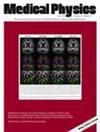Forty to fifty percent of women and 13%–22% of men experience an osteoporosis-related fragility fracture in their lifetimes. After the age of 50 years, the risk of hip fracture doubles in every 10 years. x-Ray based DXA is currently clinically used to diagnose osteoporosis and predict fracture risk. However, it provides only 2-D representation of bone and is associated with other technical limitations. Thus, alternative methods are needed.
To develop and evaluate an ultra-low dose (ULD) hip CT-based automated method for assessment of volumetric bone mineral density (vBMD) at proximal femoral subregions.
An automated method was developed to segment the proximal femur in ULD hip CT images and delineate femoral subregions. The computational pipeline consists of deep learning (DL)-based computation of femur likelihood map followed by shape model-based femur segmentation and finite element analysis-based warping of a reference subregion labeling onto individual femur shapes. Finally, vBMD is computed over each subregion in the target image using a calibration phantom scan. A total of 100 participants (50 females) were recruited from the Genetic Epidemiology of COPD (COPDGene) study, and ULD hip CT imaging, equivalent to 18 days of background radiation received by U.S. residents, was performed on each participant. Additional hip CT imaging using a clinical protocol was performed on 12 participants and repeat ULD hip CT was acquired on another five participants. ULD CT images from 80 participants were used to train the DL network; ULD CT images of the remaining 20 participants as well as clinical and repeat ULD CT images were used to evaluate the accuracy, generalizability, and reproducibility of segmentation of femoral subregions. Finally, clinical CT and repeat ULD CT images were used to evaluate accuracy and reproducibility of ULD CT-based automated measurements of femoral vBMD.
Dice scores of accuracy (n = 20), reproducibility (n = 5), and generalizability (n = 12) of ULD CT-based automated subregion segmentation were 0.990, 0.982, and 0.977, respectively, for the femoral head and 0.941, 0.970, and 0.960, respectively, for the femoral neck. ULD CT-based regional vBMD showed Pearson and concordance correlation coefficients of 0.994 and 0.977, respectively, and a root-mean-square coefficient of variation (RMSCV) (%) of 1.39% with the clinical CT-derived reference measure. After 3-digit approximation, each of Pearson and concordance correlation coefficients as well as intraclass correlation coefficient (ICC) between baseline and repeat scans were 0.996 with RMSCV of 0.72%. Results of ULD CT-based bone analysis on 100 participants (age (mean ± SD) 73.6 ± 6.6 years) show that males have significantly greater (p < 0.01) vBMD at the femoral head and trochanteric regions than females, while females have moderately greater vBMD (p = 0.05) at the medial half of the femoral neck than males.
Deep learning, combined with shape model and finite element analysis, offers an accurate, reproducible, and generalizable algorithm for automated segmentation of the proximal femur and anatomic femoral subregions using ULD hip CT images. ULD CT-based regional measures of femoral vBMD are accurate and reproducible and demonstrate regional differences between males and females.



